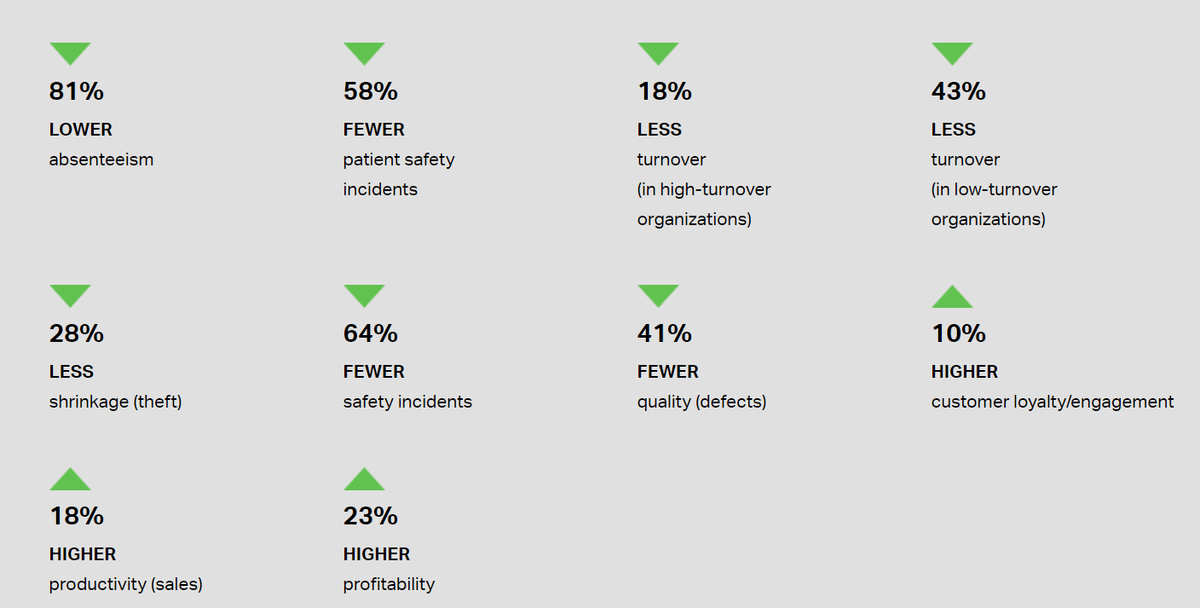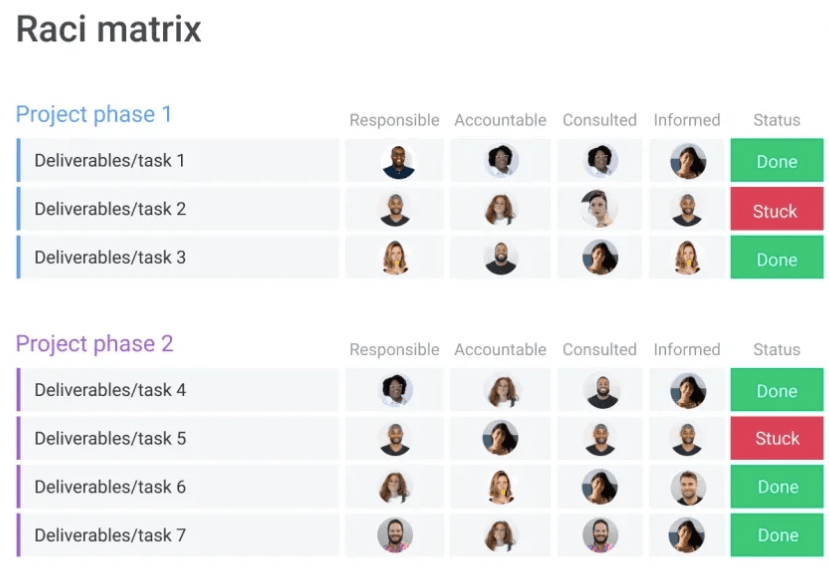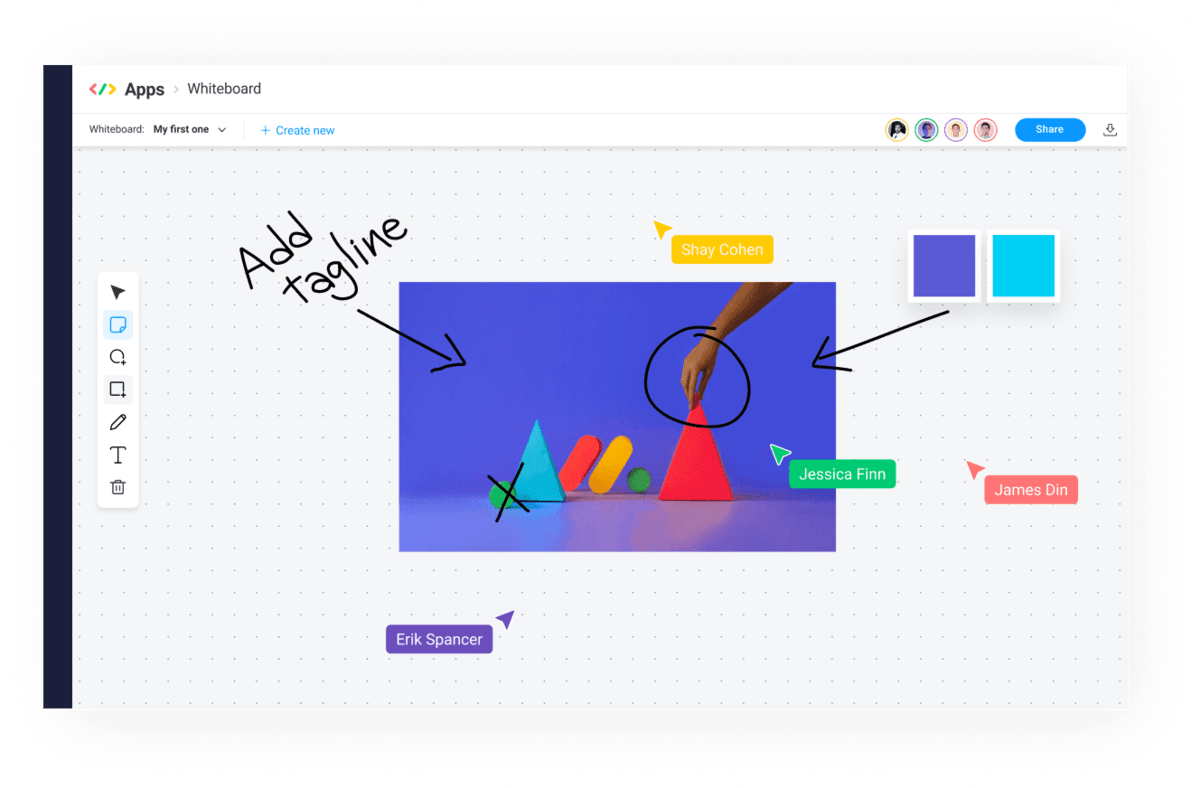In a world that’s changing at an unprecedented pace in all industries, team charters and templates are a must for employees and teams to stay the path.
A team charter is a tool that project managers — and you — can use to create a clear blueprint of your goals, expectations, and workflows to help a diverse team stay on the same page.
In this article, we explain the team charter definition, team charters’ most crucial elements, why it’s important, and what goes into creating a team charter.
What is a team charter?
A team charter is a document that defines your goals, assets, and obstacles. Essentially, it’s like a product roadmap, except it’s for a single team. It focuses only on their deliverables and how to best map them out over time.
A team charter clearly defines the roles and responsibilities of everyone involved. It ensures a smooth process over the long term, even through big transitions.
For project teams, a charter seeks to remove any confusion about what the team’s role in a greater outcome — or business process — is, both for the team members themselves and for middle and upper management.
Why is a team charter important?
Not only does a team charter give meaning and more clarity to a project, but it can also help team members feel more cohesive as a unit. And that’s a great way to improve employee engagement — which has all sorts of benefits, including reducing absenteeism, boosting productivity, and all of the below.

It also improves the quality of work, increases customer loyalty, and reduces turnover. It’s one of the most important changes you can make to your company. If you want to maximize the productivity of your team, engagement is key. And a team charter is a great place to start.
What is included in a team charter?
A team charter includes a lot of crucial elements, including the mission, context, roles, resources, and roadblocks. Don’t be afraid to go into detail when creating the charter. Each team charter example you find might vary a little, but we’ve included the most important aspects here.
Mission and objectives
First and most important, you need to clearly define the mission and major objectives of the team. Not just what you’re going to create, but why that matters to your company and your customers. This why might seem obscure and unimportant, but it can make a world of difference in your team’s approach.
By putting the customer’s needs and expectations first, you can transform how your team handles any project. Instead of just creating a product to create a product, they start considering the customer in every decision they make. That’s what you want in a product team — not just someone mindlessly following a feature list.
This can take the form of a purpose statement — a single-sentence description of exactly what you’re going to do and why.
Context
Why is your team working on the particular product, project, or feature at this time? What does success or failure mean for your company?
This context not only helps motivate your team but can also help you make critical decisions throughout the process.
Resources
Do you have any business partners that you can rely on for the project? Are there any local associations that you can contact for support?
You should also consider internal resources from other teams, like senior developers or other specialists.
Roles and responsibilities
Showing up to work shouldn’t involve a guessing game as to who’s responsible for which aspect of a project. Use the team charter to remove all doubt about this issue. It should clearly outline the team leader and ownership of each deliverable.
A project team functions better when everyone knows their role and focuses on doing their work. Using a RACI matrix to define who’s responsible for what can be helpful.

Boundaries and potential roadblocks
Ineffective risk management is a leading cause for 27% of all failed projects.
When over 1 in 4 projects fails due to unforeseen risks, you need to take a different approach. Outline all boundaries and potential roadblocks in your project team charter. That’s one of the best ways to avoid long-term failure.Effective project risk management starts at the team level. You can’t only rely on presentations and expensive data backup systems alone.
Workflows and operations
Just like there’s no room for guesswork with everyone’s responsibilities, the workflows are the same. Day-to-day operations are much more effective when nobody is winging it or doesn’t understand what to do.
Outline the entire workflow from beginning to end without going into too much detail.
Don’t finalize it until everyone is on the same page
Don’t rush to the finish line — keep working on the team charter until everyone is happy. Of course, it shouldn’t become a way to procrastinate, so set a realistic time frame. But don’t try to push through it in 30 minutes.
Since you’re going to revisit it later, it doesn’t need to be 100% flawless. But everyone must be on board with the team goals, objectives, and operations.
An effective team charter isn’t static, but dynamic
As the larger company mission and the members of a team change, so should the team charter. It will be a source of stability for the team, sure, but that doesn’t mean it shouldn’t adapt to change at all. It must evolve naturally as the situation changes.
The best way to achieve this is to schedule regular meetings — for example, quarterly — where you revisit the team charter.
Change management is crucial to the long-term success of any business.
Creating a team charter on monday.com
If you want an adaptable team charter you can change and update, the best way is to create it digitally.
With monday.com, you can go beyond a typical team charter and also personalize the outlined workflows with custom templates, boards, and automations.
Use our virtual whiteboard to create your team charter canvas
monday.com offers a virtual whiteboard app that is perfect for any brainstorming meeting. With color-coded cursors, you can add text, shapes, and drawings in real-time.
When you’re first working on your team charter, it can be helpful to map it out visually. This is the perfect tool for that, especially for a fully or partially remote team.

In a team charter canvas, you create multiple columns — one for each category — and add basic cards that show who’s responsible for what, what your main goals are, and more.
Create and share a team charter board with management and stakeholders
Once you’ve finished a rough first draft, you can easily use one of our templates to create a dedicated team charter board. That makes it easy to share with a stakeholder or executive sponsor so they can give their input. For example, they may want to add a goal, core value, or overall team direction.
With monday.com, you can easily give stakeholders different levels of user access depending on their involvement.
Create custom workflow templates to streamline your operations.
monday.com offers 200+ ready-made templates for many different use cases. You can easily customize the one that suits your team best to create a blueprint for how your team should work.
You can assign work items and deliverables directly to staff, and set up automated workflows that make sure your team will work smoothly.
Routinely revisit and update your board
With the team charter in monday.com, you can easily make changes as your team and project evolve. With every new hire, you can easily adapt the workflows and reassign ownership based on new priorities.
A dynamic team charter is key to nurturing a high-performing team over the long term.
Create a team charter that will live on
If your team rushes through the process because they’re forced to create one, the resulting team charter won’t achieve anything. You need to get your whole team on board with the process to create something that will have a life after the process.
It’s much easier to do that when you create a digital version you can access, collaborate on, and update at any time.
You can, for example, adapt our project charter template to get started in minutes. What are you waiting for?
